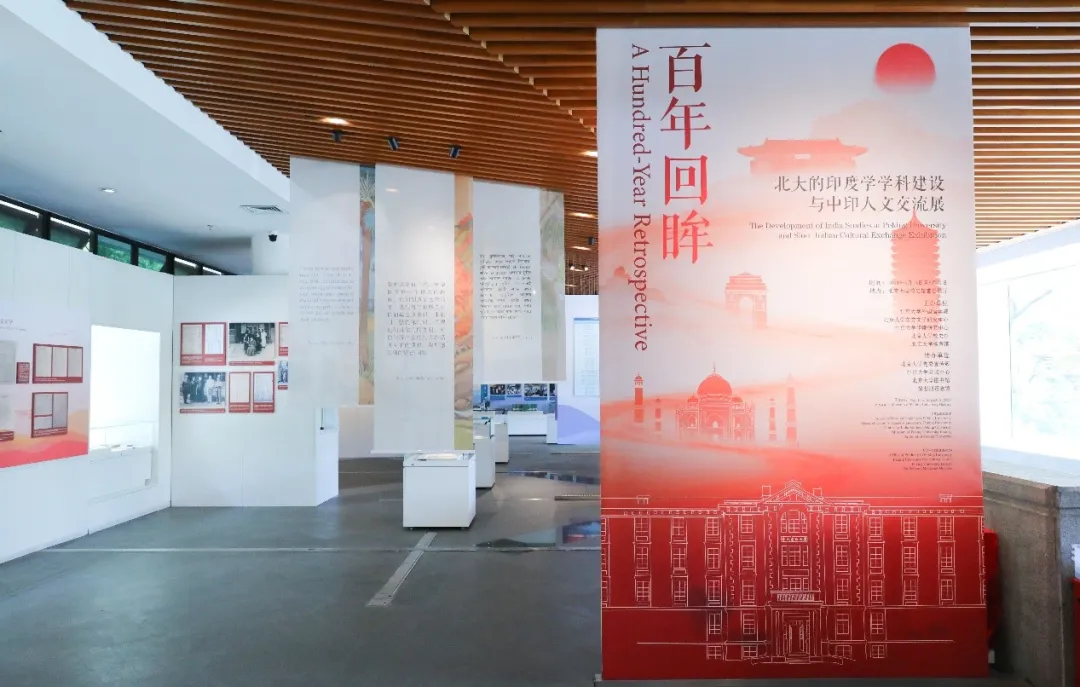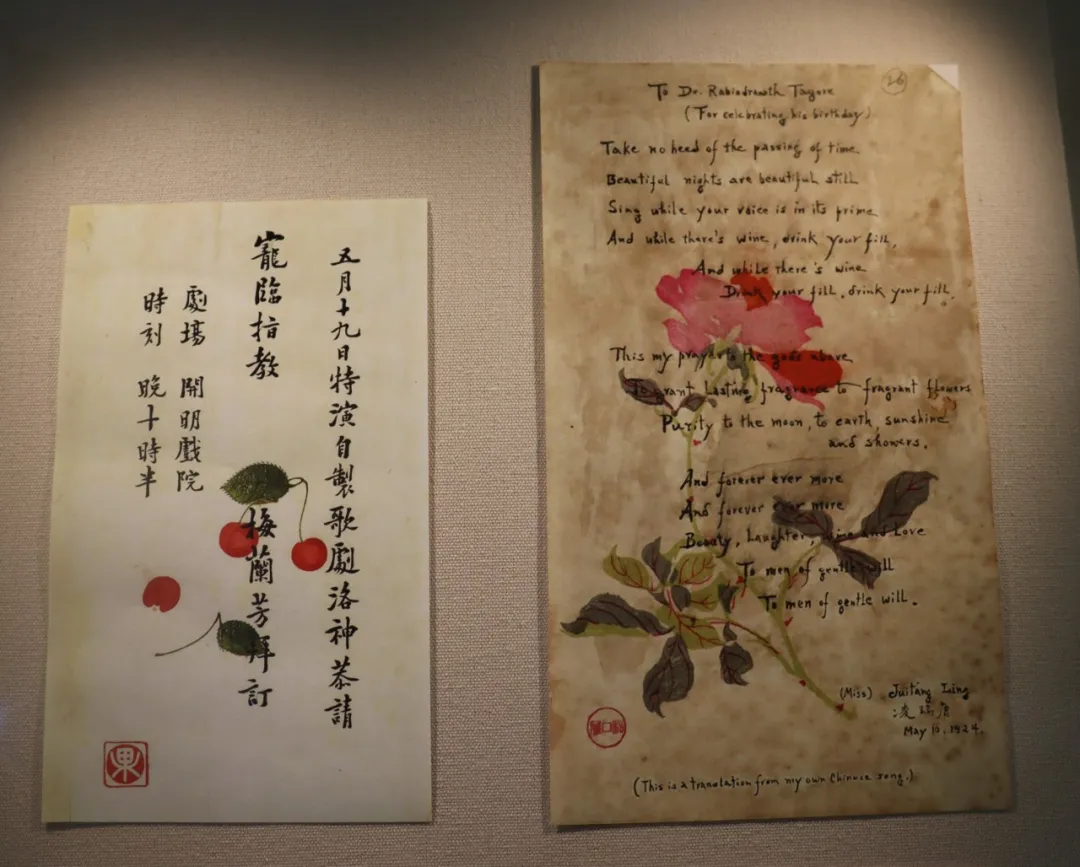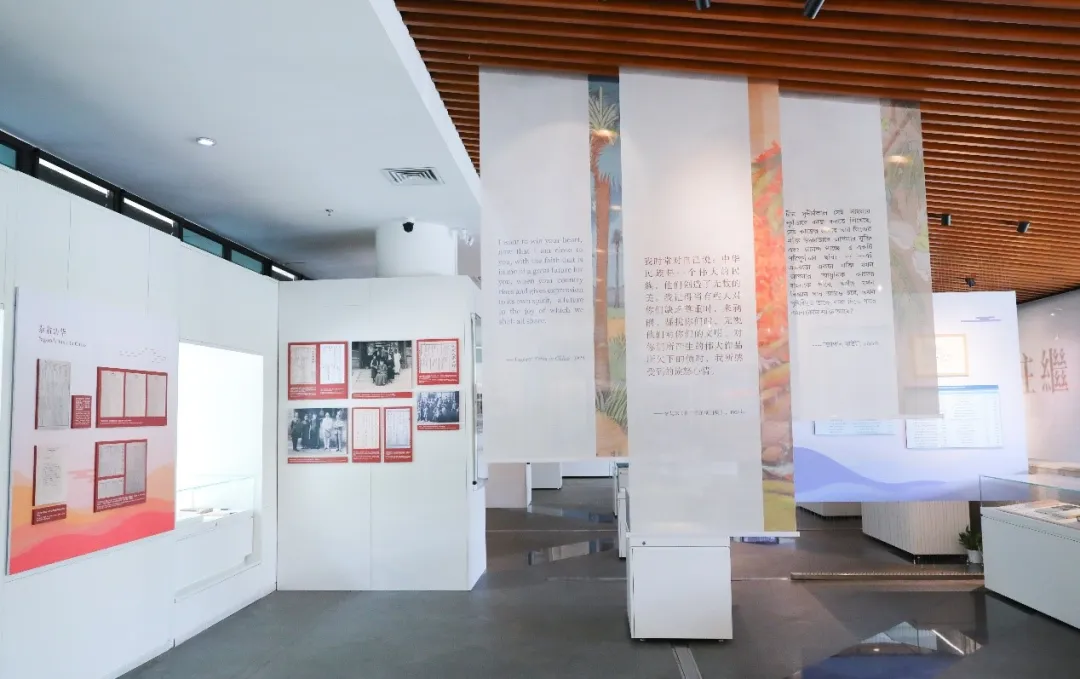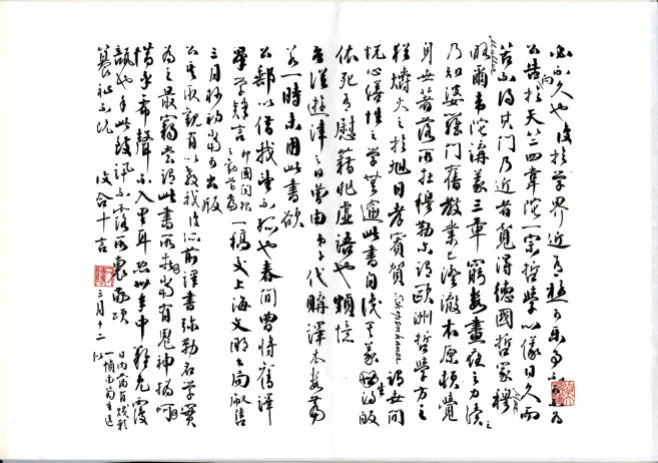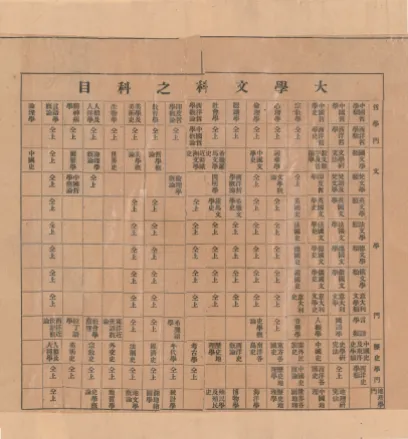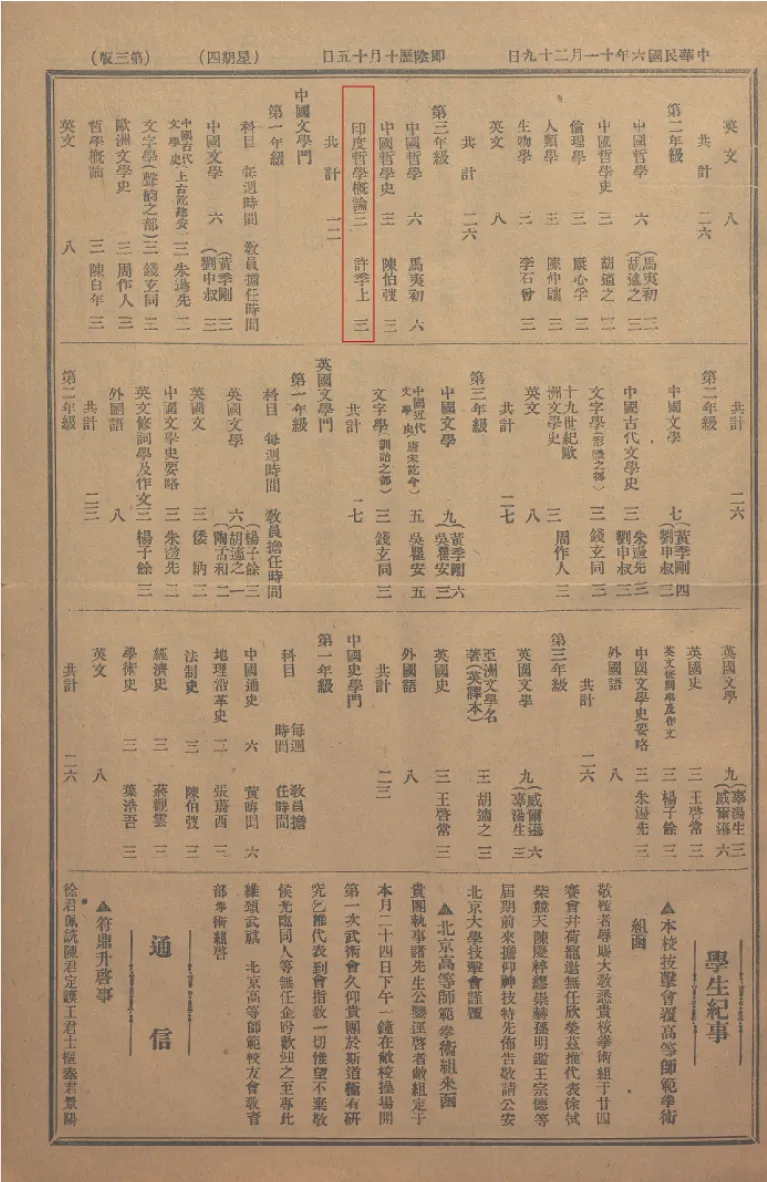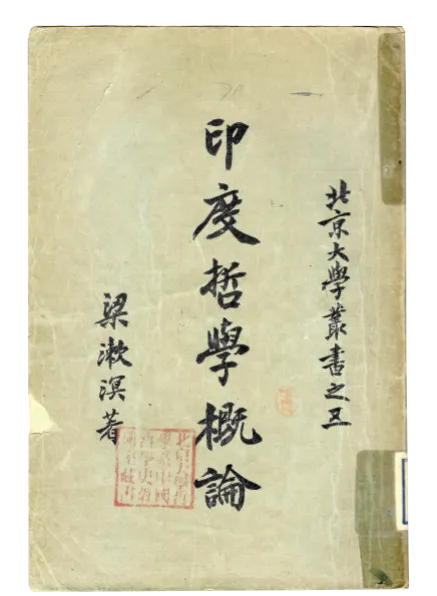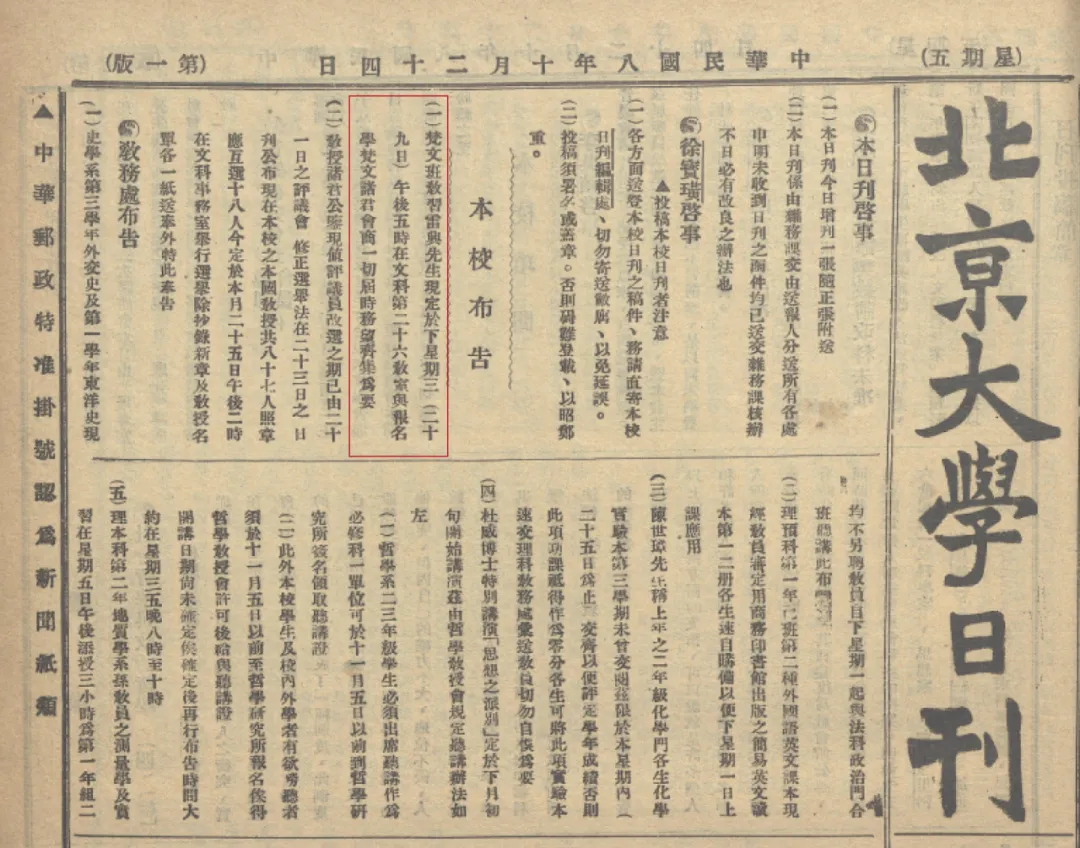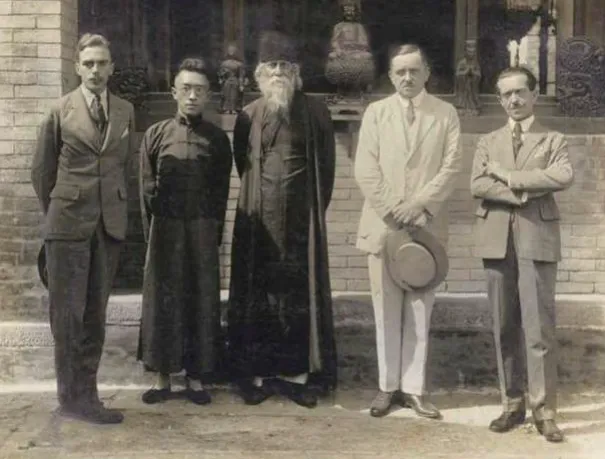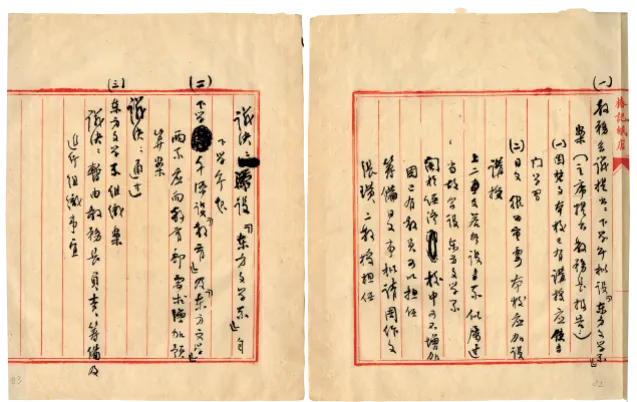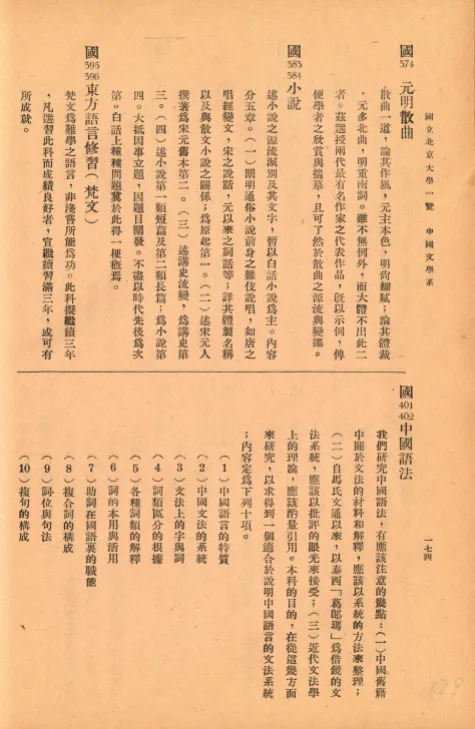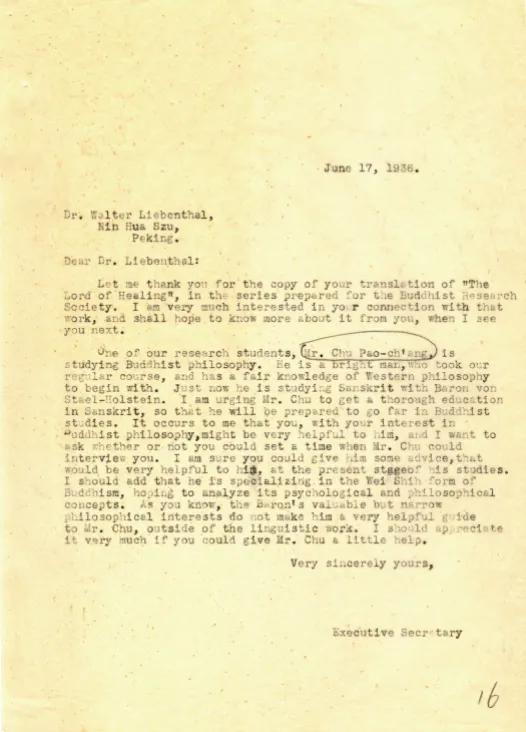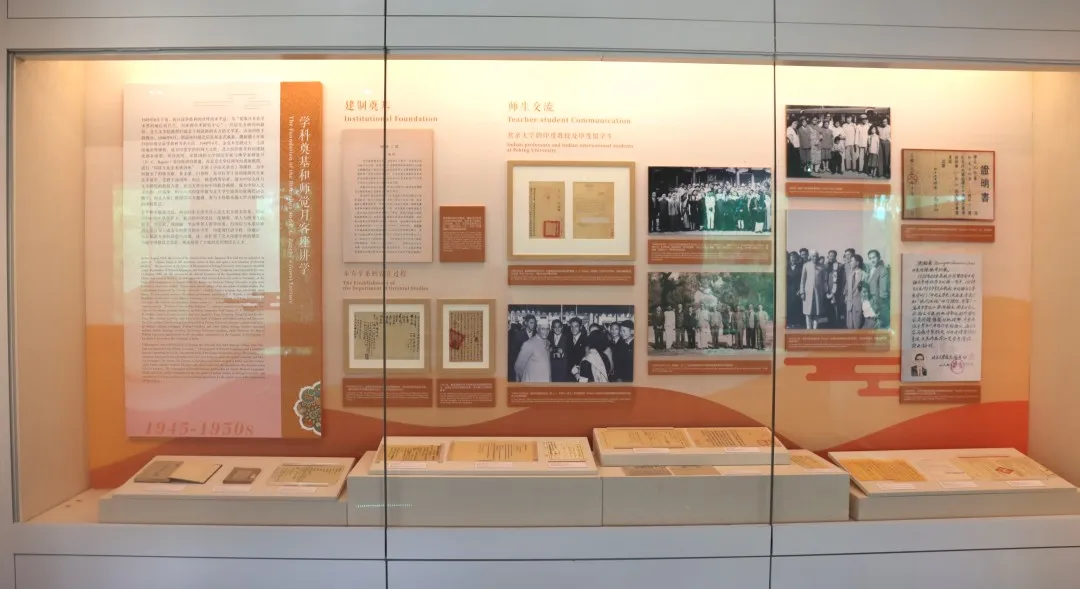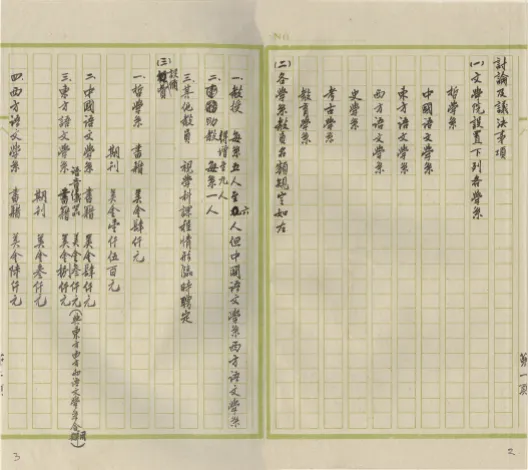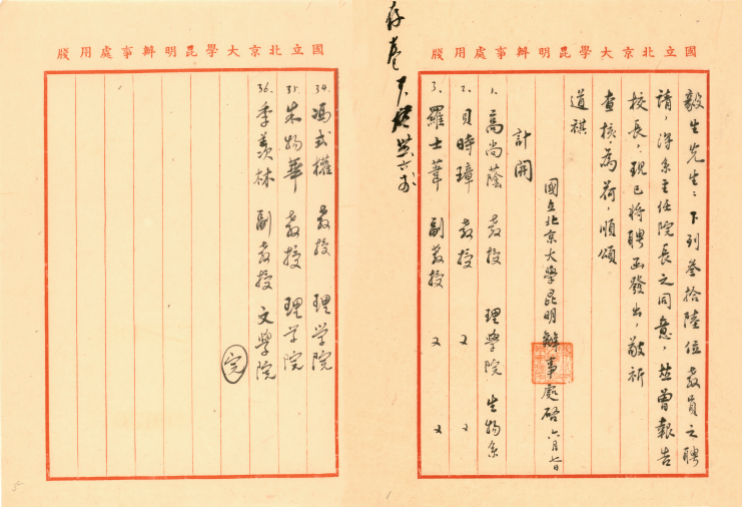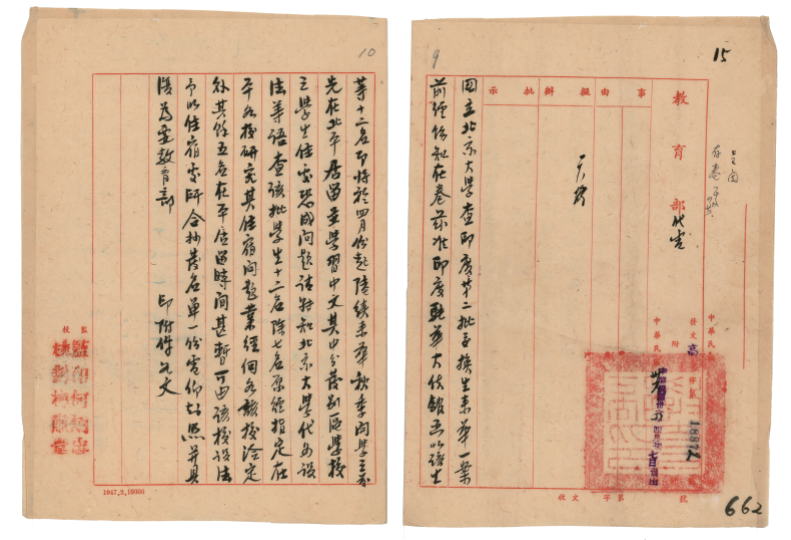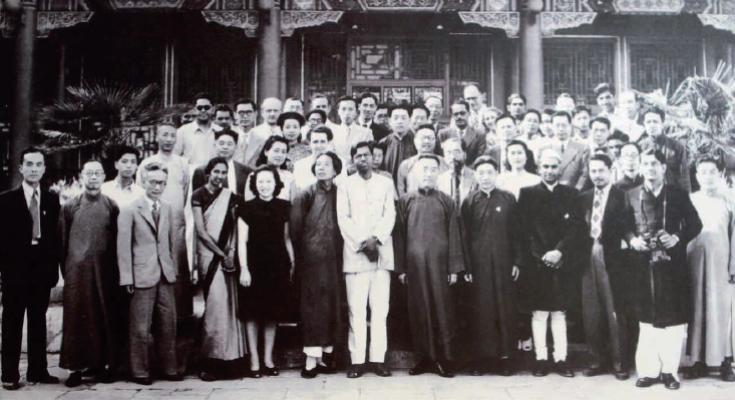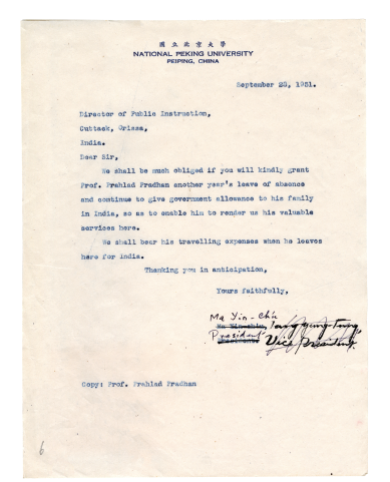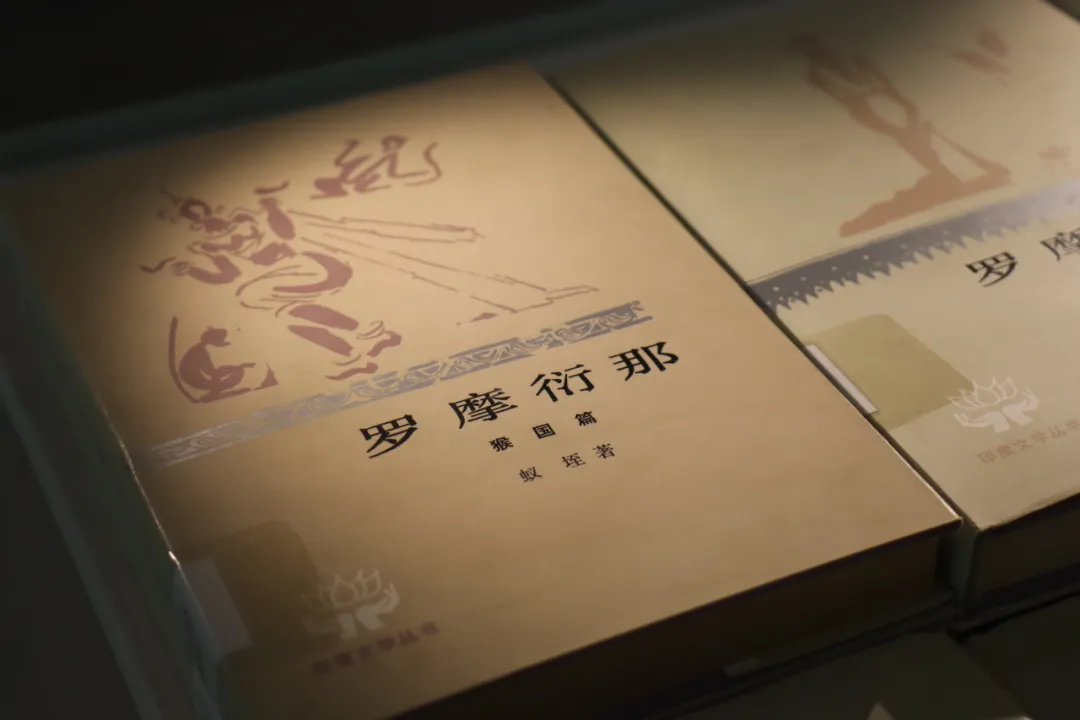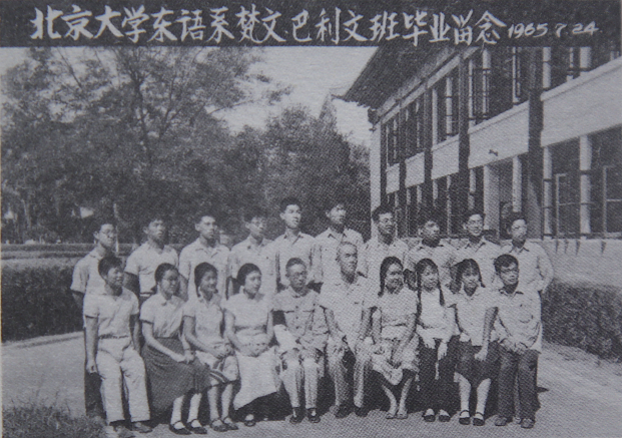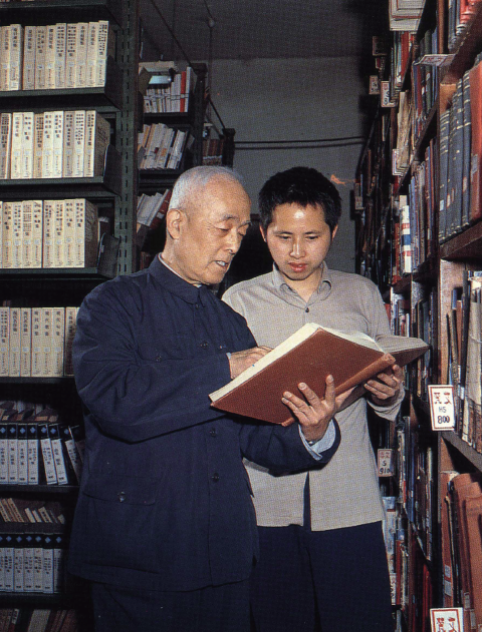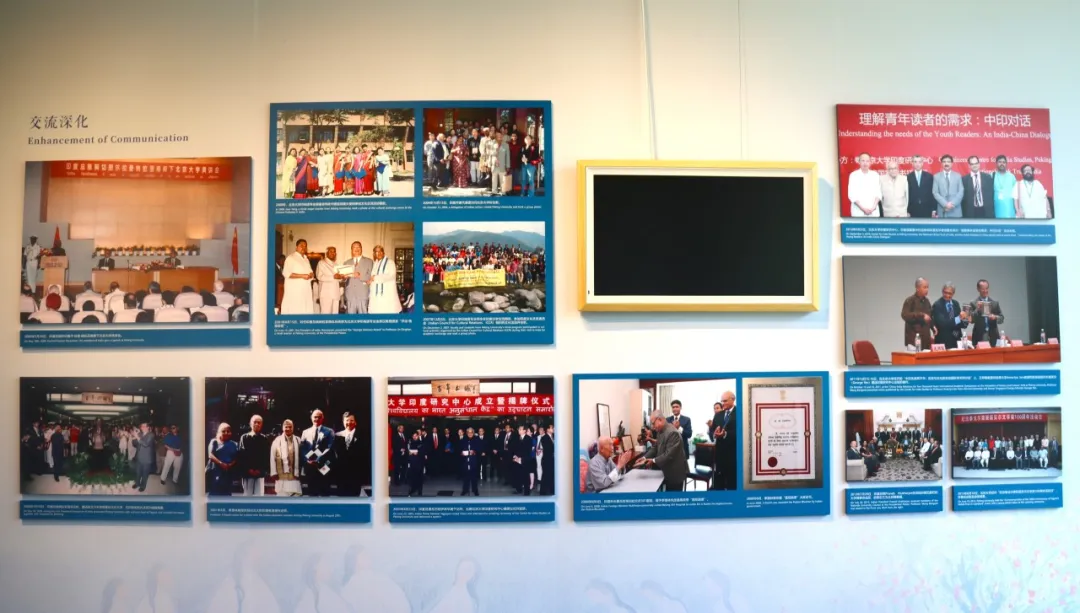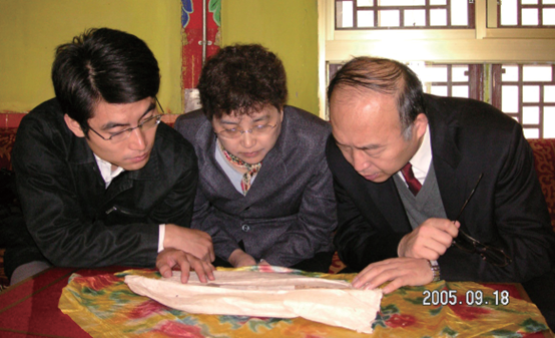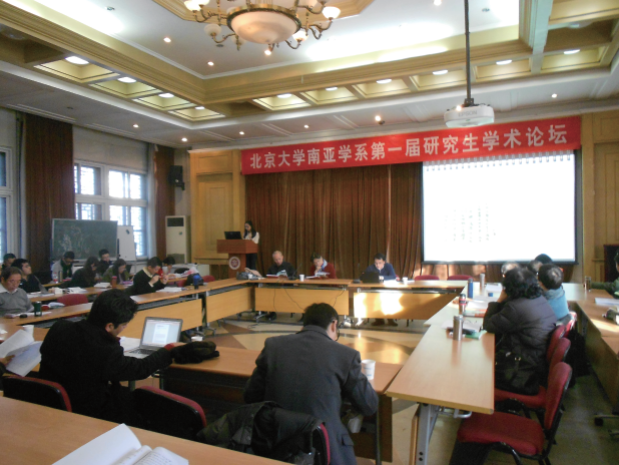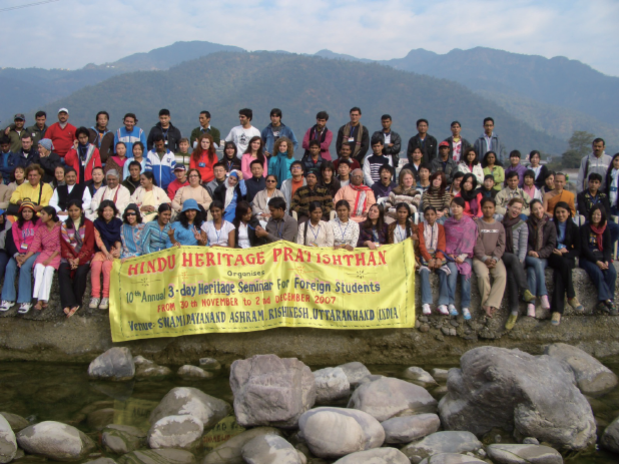Exhibition Information
Time: May 16, 2024 - December 31, 2024
Location: First-floor Special Exhibition Hall, Peking University History Museum
Visiting Hours:
- Tuesday, Thursday, Saturday, and Sunday: 9:00 AM to 4:00 PM (Admission stops at 3:45 PM)
- Closed on public holidays. Other closure arrangements will be announced separately.
Peking University, June 25, 2024: As two of the most culturally rich ancient civilizations in Asia, China and India share a long and profound history of cultural exchange. The Indian Studies program at Peking University (PKU) is not only a significant component of early Chinese Oriental Studies but also a model for the construction and development of this discipline in China.
In 1924, Indian poet and philosopher Rabindranath Tagore visited China for 49 days, giving lectures across the country and receiving a grand welcome from the Chinese cultural community. This visit marked a new chapter in Sino-Indian cultural exchanges and symbolized the spirit of friendship and mutual resistance against imperialist colonial aggression in the early twentieth century. This visit also turned a new page for Peking University's Indian Studies program.
The year 2024 marks Peking University's “Year of Disciplinary Quality” as well as the centenary of Tagore's visit to China. Taking this opportunity to review the century-long development of the Indian Studies discipline at Peking University and the journey of Sino-Indian cultural exchanges, the University is hosting the exhibition under the theme "A Hundred-Year Retrospective: The Development of India Studies at Peking University and Sino-Indian Cultural Exchanges" to recapitulate our experiences and look towards the future.
The exhibition includes four sections: “The Dawn of New Studies and Tagore's Visit to China”, “Foundation of the Discipline and P. C. Bagchi's Visiting Professorship”, “Exploration of Disciplinary Systems and Revival of Sino-Indian Cultural Exchanges”, and “Development in the New Era and Deepening of Sino-Indian Cultural Exchanges”. Peking University’s Indian Studies discipline was built, over the past century, by four generations of scholars.
On top of materials related to this painstaking journey, our exhibits span historical archives and photographs related to Sino-Indian exchanges, relevant paintings by Chinese and Indian scholars, and academic works on Indian Studies by Peking University scholars. Under the theme of cultural exchange and mutual learning among civilizations, the exhibition aims to continuously explore the historical lineage of Sino-Indian cultural exchanges and the development process of the Indian Studies discipline at Peking University. This further advances research on civilizations along the Silk Road, as part of the implementation of the Belt and Road Initiative.
I. The Dawn of New Studies and Tagore's Visit to China
Since the late Qing Dynasty (1644-1911), Western knowledge had gradually spread eastward, and Sanskrit studies were among these disciplines. However, Sanskrit studies were not entirely new; they were closely related to Buddhism, which had become an integral part of Chinese culture and associated research. Yan Fu, who was appointed as the president of the Imperial University of Peking (the forerunner of Peking University), was enthusiastic about translating works and viewed India through a Western lens.
Image | Letter from Yan Fu to Xia Zengyou
In 1913, the Ministry of Education of the Republic of China issued the “University Regulations,” which, for the first time, listed "Sanskrit" under the subjects of university arts, marking the inception of the Sanskrit discipline at Peking University.
In 1917, Peking University offered a course on Indian philosophy, initially taught by Xu Jishang (Dan) and later by Liang Shuming. After the May Fourth Movement in 1919, the University introduced Sanskrit courses, with Ferdinand Diedrich Lessing as the first instructor.
Image | Subjects under University Regulations for Arts and Humanities
Image | “Introduction to Indian Philosophy” course by Xu Jishang, Autumn, 1917
Image | Liang Shuming’s Introduction to Indian Philosophy (1920 reprint)
Image | Ferdinand Diedrich Lessing, the first Sanskrit teacher at Peking University, late October 1919
Baron Alexander Wilhelm von Staël-Holstein succeeded Lessing, sowing the seeds of Sanskrit education at Peking University for nearly two decades.
Staël-Holstein pioneered the comparative study of Buddhist scriptures in Sanskrit, Tibetan, and Chinese, publishing The Kāśyapaparivarta: A Mahāyānasūtra of the Ratnakūta Class, which had a profound international impact.
In April 1924, the Indian literary giant Rabindranath Tagore visited China, bringing a fresh wave to the Chinese intellectual and education circles. Heated debates about his visit notwithstanding, Tagore's arrival not only rekindled the memory of ancient Sino-Indian friendship but also opened a new chapter in modern cultural exchanges between China and India, accelerating the establishment of the discipline of Indian studies at Peking University.
Image | Rabindranath Tagore (center) with Hu Shih and Staël-Holstein (second from the right), May 10, 1924
In May 1924, Peking University established the Department of Oriental Literature, which incorporated Sanskrit teaching in its syllabus. Scholars such as Yu Daoquan, Lin Ligang, and Walter Liebenthal devoted themselves to this endeavor.
Image | Peking University academic council meeting discussing the organization of the Department of Oriental Literature, May 28, 1924
Image | Introduction to “Oriental Language Studies (Sanskrit)” course in Peking University's 1935 curriculum outline
Image | Letter from Yenching University to Walter Liebenthal, inviting him to teach Sanskrit, June 17, 1936
After Tang Yongtong was appointed as the University president in 1949, he strengthened the teaching and research of Indian Buddhism and philosophy, providing great help to the gradual formation of the Indian Studies discipline. During the War of Chinese People's Resistance Against Japanese Aggression, the Southwest Associated University persevered under harsh conditions, with the Indian studies discipline enduring like an ember in the ashes, never extinguished.
Ⅱ. Foundation of the Discipline and P. C. Bagchi's Visiting Professorship
In late August 1945, shortly after the victory of the War of Resistance against Japanese Aggression, the professors of the College of Literature at Peking University, aiming to replace Japan's academic position and establish a new center for Asian studies, eagerly planned to create a new Department of Oriental Languages and Literatures, led by Tang Yongtong.
On August 29, 1945, the College of Literature held a faculty meeting to discuss the establishment of the Department of Oriental Languages and Literatures and proposed funding for purchasing books and periodicals.
Image | Peking University College of Literature convenes faculty meeting to discuss the establishment of the Department of Oriental Languages and Literatures, August 29, 1945
Image | Ji Xianlin appointed as Associate Professor in the College of Literature at Peking University, 1946
Upon his return to China in August 1946, Hu Shi announced the official formation of the department and appointed Ji Xianlin, who had spent ten years in Germany, as the head of the department. In August 1948, Jin Kemu was appointed to teach Hindi and other courses, becoming one of the two pillars of the Indian studies discipline. Thus, the institutional framework of the Indian studies discipline at Peking University was essentially established.
Around this time, P. C. Bagchi, a Sinologist and Buddhist scholar from Visva-Bharati University, was sent by the Indian government to Peking University as a visiting professor for two years. He delivered a series of lectures on the history of Indian culture and taught courses such as “The History of Sino-Indian Relations,” making significant contributions to the discipline.
Image | Ministry of Education's telegram to Peking University regarding the second batch of Indian exchange students coming to study in China, 1947
Simultaneously, India sent ten graduate students, including Amitendra Nath Tagore, V. V. Paranjpe, and Y. K. Shukla, to study in Beiping (Beijing), where they were taught by scholars like Tang Yongtong, Xiang Da, and Xu Beihong. They would form a pioneering force in Sino-Indian cultural and literary research.
Image | Group photo at the Sino-Indian Joint Art Exhibition
On June 4, 1948, Peking University held a joint Chinese-Indian art exhibition featuring works by Indian students like Y. K. Shukla and N. R. Chowdhury, as well as renowned Chinese painters including Xu Beihong, marking a significant event in Sino-Indian cultural exchanges.
Image | Letter from Ma Yinchu to the Director of Public Education of Orissa, India, requesting to reappoint Professor Prahlad Pradhan to teach at Peking University
The exchange between Chinese and Indian teachers and students was multifaceted. Indian lecturers such as Prahlad Pradhan provided modern Indian language education to Peking University students, while Professor Xu Ren of Peking University, invited by the Indian counterpart, participated in the construction of the Department of Ancient Plants at Lucknow University.
After the liberation of Beiping, the Oriental Language School in Nanjing merged into the Department of Oriental Languages and Literatures at Peking University, expanding the faculty and student body of the Indian studies discipline.
The emerging Sino-Indian exchanges were frequent, with significant interactions among scholars and libraries. Upon returning from their studies in India, Liu Anwu, Liu Guonan, and Li Zonghua, among other scholars, joined forces with Peking University-trained scholars such as Jin Dinghan. They would form the lifeblood of the discipline’s faculty.
The envisioning and establishment of specialized programs in Indian modern languages, as well as programs for Hindi and Urdu, further enriched the depth of the Indian studies discipline at Peking University. These programs rapidly trained a large number of practical language talents urgently needed for the construction of New China.
Ⅲ. Exploration of Disciplinary Systems and Revival of Sino-Indian Cultural Exchanges
In 1960, Peking University enrolled its first undergraduate students in Sanskrit and Pali studies, establishing three major language specialties: Sanskrit and Pali, Hindi, and Urdu. This program produced excellent Sanskrit studies experts such as Jiang Zhongxin, Huang Baosheng, and Guo Liangyun.
Image | Group photo of the first graduating class of Sanskrit and Pali undergraduates, Department of Oriental Languages and Cultures, Peking University
In May 1978, Ji Xianlin submitted a proposal with regard to the establishment of the South Asia Institute. That same year, the South Asia Research Institute, co-founded by Peking University and the Chinese Academy of Social Sciences, was approved, marking a new chapter in comprehensive Chinese research on India and South Asia. Although the institute only existed for a few years, it cultivated a group of outstanding scholars of Indian studies, including Ge Weijun, Wang Yong, Xue Keqiao, Zhu Mingzhong, Fang Guangchang, Liu Jian, Wang Bangwei, Shang Huipeng, Yao Weiqun, Duan Qing, and Hu Haiyan, making it a notable academic hub of its time.
Image | Professor Ji Xianlin guiding PhD student Wang Bangwei in the library of the Department of Oriental Languages and Cultures
Ji Xianlin devoted several years to the monumental task of translating the epic Rāmāyaṇa into Chinese and published An Initial Exploration of the Rāmāyaṇa, showcasing the vitality of Indian studies. Jin Kemu's A History of Sanskrit Literature and Selections of Ancient Indian Literary Theory represented pioneering works in the academic field, and paved the way for the translation of another epic, the Mahābhārata.
In the early 1980s, Sino-Indian cultural exchanges gradually warmed. Ji Xianlin revisited India, writing the first collection of essays, Reflections of India, through which he expressed joy at Sino-Indian friendship and shared his insights into Indian culture. Jin Kemu's Old Stories of India revisited the diverse experiences of his past studies in India.
In 1986, the Peking University Library applied to host the opening ceremony of an Indian book exhibition on September 15. On September 22, 1997, the Department of Oriental Languages and Cultures at Peking University submitted an application to invite Indian Sanskrit scholar Saroja Bhate as a short-term lecturer. Peking University actively promoted exchanges between Chinese and Indian scholars, adding new energy to the discipline's development.
In 1984, Peking University enrolled its second cohort of undergraduates in Sanskrit and Pali studies. With Wang Bangwei becoming the first domestic Ph.D. in Indian language and literature in 1987, the postgraduate talent training system for Indian studies at Peking University gradually came of age.
The Japanese scholar Shinjitu Karashima was Ji Xianlin's second doctoral student, demonstrating the spillover effect of China's Indian studies talent training, as its influence began to extend overseas.
Ⅳ. Development in the New Era and Deepening of Sino-Indian Cultural Exchanges
The main body of Indian studies discipline at Peking University is the Department of South Asian Studies within the School of Foreign Languages, complemented by scholars from the Department of Philosophy, the Department of History, the School of International Relations, and the Institute for National Development.
Image | Duan Qing (center) with Wu Zhipan (right) and Ye Shaoyong examining a Sanskrit palm-leaf manuscript at the Potala Palace
Entering the new era, this discipline upholds the excellent traditions established by pioneers such as Ji Xianlin, expanding research advantages of multilingual interpretation of Silk Road texts and classical Indian studies. It actively explores South Asian studies, simultaneously engages in country-specific and regional research, and continuously leads talent training and scientific research in Indian studies nationwide.
The faculty team of the Department of South Asian Studies is exceptionally strong, encompassing all high-level disciplinary talents in the domestic sphere, including one Peking University Boya Retired Professor, one Changjiang Distinguished Professor, and three Young Changjiang Scholars appointed by the Ministry of Education. The Indian Language and Literature major has been selected as a national key second-level discipline, with Hindi, Sanskrit and Pali, and Urdu being selected as national first-class undergraduate programs.
The Department of South Asian Studies undertakes teaching and research in three undergraduate language majors and more than ten non-major ancient and modern languages. It uses platforms like the Ministry of Education's Key Research Base for Humanities and Social Sciences, the Peking University Research Center for Oriental Literature, and the Peking University India Research Center to closely align with the fundamental task of moral education.
Image | First Graduate Student Academic Forum of the Department of South Asian Studies, Peking University
Two new programs, namely “Classical Indian Studies” and “Country and Regional Studies” have been established, guiding students to participate directly in cutting-edge academic research. In addition to two doctoral dissertations having been selected as national outstanding doctoral dissertations, the department has also cultivated a large number of talented individuals in diplomacy, trade, culture, education, and other fields.
Image | Peking University Hindi program faculty and students participating in cultural activities organized by the Indian Council for Cultural Relations (ICCR) during their study visit to India
The Indian studies discipline extensively conducts domestic and international exchanges and cooperation, especially by organizing student exchanges, dispatching scholars, hosting international conferences, and signing cooperation agreements.
Not only do these activities deepen Sino-Indian cultural exchanges, but they also serve to ensure the continual achievements of human civilization, address major national needs, and build research hubs that answer both underexplored academic fields and practically significant issues. Moreover, the department’s efforts also serve the country's "Belt and Road" initiative by deeply engaging in country-specific and regional studies, establishing new paradigms for such research, and promoting new patterns of cultural exchange and mutual learning between Chinese and foreign civilizations.
Source: School of Foreign Languages; Research Center of Eastern Literature; Center for India Studies; Museum of Peking University History; Archives of Peking University
Translated by: Wang Mengjiao
Edited by: Yang Ruoxiang
